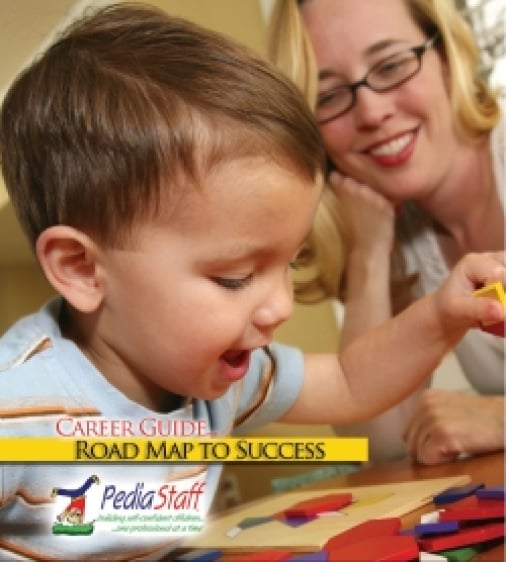OT Corner: Clinic and Home Activities for Developing Fine Motor Control
By: Loren Shlaes, OTR
Certified Teacher of the Alexander Technique

As we develop, the thumb and forefinger {the radial portion} separate out from the rest of the hand and perform the fine motor functions. The pinkie, or ulnar, portion of the hand is responsible for strength, like using a hammer, and for sustained grasp, like holding a bag.
As the fingers strengthen, arches form in the palm. If you pull your fingers and thumb in closely, you can see two distinct arches. One forms along the knuckles that connect the fingers to the palm. The other runs along the lengths of the fingers. These two arches are what allow the palm to form a hollow cup so that we can hold things inside our hands. They also permit strong tip to tip opposition of the fingers and thumb, which is essential for fine motor precision activities like picking up and manipulating very small objects between the thumb and forefinger.
If a child’s crawling phase was too short, he may need to work on ways to strengthen his shoulders and separate out his thumb from the rest of his hand, which is part of what crawling accomplishes. Wheelbarrow walking, push ups, and any activities that require the child to support his weight through his hands and shoulders are good. I like to tell parents to have the child lie on his belly and prop himself up on his elbows while drawing, putting together puzzles, etc. on the floor. This stabilizes the shoulders, which give the arms a good base of support, and strengthens the neck, which supports the eyes.
Scissors are a great way to strengthen the hand and fingers. I like Fiskars child scissors. I teach the child to put his thumb through the small loop and his third and fourth finger through the larger loop, wrapping the index finger around the blade, which allows for improved control. I tell the child that cutting with scissors is like driving a car down the street. The scissors is the car, the fingers are the passengers, and the index finger is the driver, and holds on to the steering wheel. Make sure to drive in your lane! Hold on to the wheel, don’t crash!
I have a whole set of scissors with different blades on them that cut fancy shapes, like scallops and zigzags. Those old fashioned activities like cutting out paper doll chains and snowflakes are a great way to spend a rainy afternoon.
When I was a little girl, I used to love to cut strips of construction paper, tape them or paste them together, and make paper chains. Or my mother would find a box of paper clips and we would make paper clip chains. {Just avoid the colored ones, since they contain lead.}
Colorforms are good for developing tip to tip opposition and pinch. This is also a calming activity for an over amped system. Have the child make designs on a vertical surface, like a window, mirror, or the white board side of an easel.
Speaking of easels, I love them, and I love the chalk side the best. Break the chalk into small pieces so that the child is forced to hold them between his thumb and forefinger. If children are not provided with large markers and are only provided with small bits of chalk and crayons to draw and write with, they will have no opportunity to develop a dysfunctional prehension pattern.
I tell parents to designate the child the official junk mail shredder, and give him all of the mail to cut up before it goes in the recycling. Tearing paper is good for little fingers, too.
Picking up coins is a great way to develop pinch and separate out the two sides of the hand. Have the child pick up coins one at a time between his thumb and forefinger while stashing them in his palm. He can be in charge of dropping coins into the family piggy bank or box for charity.
Lite Brite is superb for developing strong pinch. You can use plain construction paper and play tic tac toe on it.
Operation is fun and motivating. If it gets too frustrating it’s easy to disconnect the buzzer.
Stacking games are great for developing mid range control in the hands and arms. Jenga is always fun. Recently, I was introduced to the game Tier Auf Tier, a stacking game from Europe, manufactured by Haba, that I thought was wonderful. You take turns stacking wooden animals on top of an alligator. I thought that the combination of skill and luck it required was a perfect balance, and so did my friend’s five year old, when he won.
Connect Four teaches strategy and planning, and develops tip to tip opposition. I try to make the children work to get diagonal winning connections, since developmentally they are the hardest. This is a good game for a child who has perceptual issues and has difficulty writing diagonal letters like A, K, X, or Z.
Another great child’s activity from Europe goes by various names like Nagelspiel and Tic Tac Toc. It consists of wooden shapes with holes cut into them, a tiny hammer and a box of tiny nails. You use the hammer to attach the pieces to a corkboard and make designs.
If a child has weak hands and drops things out of them, he needs to work on forming those palmar arches. Dice games are perfect for this. Have the child cup them in both palms and shake them together.
I love Play-Doh, and I love all of the little factories and tools that come with it. I especially love a set of extruders that you can buy from Dick Blick.
Rubber stamps are great for stabilizing the shoulders. So are craft paper punches, often found in stationery stores.
Children love to use little tools. You can use things you might already have, like tongs, a strawberry huller, a pickle grabber, Zoosticks, and a meatball shaper, and have them pick up little objects or cotton balls and place them into a container.
Therapy putty is strengthening. You can hide coins or beads in it and have the child dig them out, they can roll it into snakes and then snip it into little balls {to pick up with the tools}.
Pop beads are great for finger strength, and the kids love them. I also like Rapper Snappers. They can be connected together to form a tunnel for marbles to slide down.
Old fashioned games like marbles and jacks are wonderful for improving eye hand coordination.
Many great therapy items can be found in discount and closeout stores. I have bought many little toys, tools, stamps, paper punches, scissors, crafts and games in places like Family Dollar and Closeout Connection. They don’t have to be expensive to be effective. The best part is using your imagination to come up with fun games and activities to do with them, and seeing what the children can come up with themselves. A favorite activity in our clinic is to stand the mats up on their sides and arrange them so that they form a maze, scatter little plastic animals around, and have the children propel themselves through, finding the animals and picking them up with tweezers or Zoosticks.
Featured Author: Loren Shlaes, OTR
Many thanks to Loren Shlaes for providing us with these great therapy ideas for our newsletter.
Loren Shlaes is a pediatric occupational therapist specializing in sensory integration and school related issues, particularly handwriting. She lives and practices in Manhattan. She blogs at http://www.pediatricOT.blogspot.com/.
PediaStaff is Hiring!
All JobsPediaStaff hires pediatric and school-based professionals nationwide for contract assignments of 2 to 12 months. We also help clinics, hospitals, schools, and home health agencies to find and hire these professionals directly. We work with Speech-Language Pathologists, Occupational and Physical Therapists, School Psychologists, and others in pediatric therapy and education.
